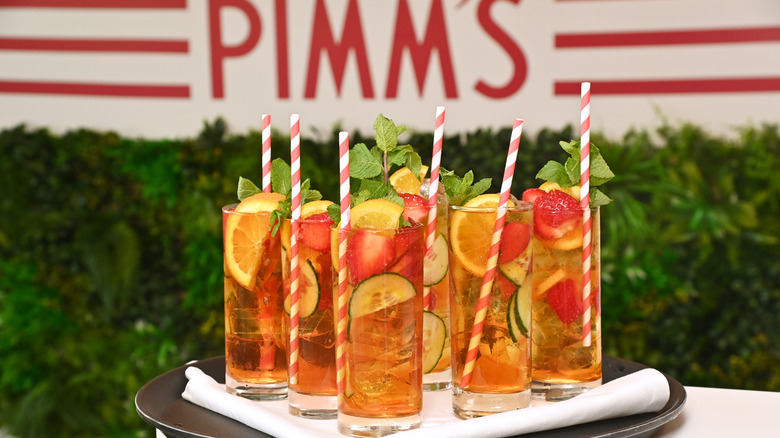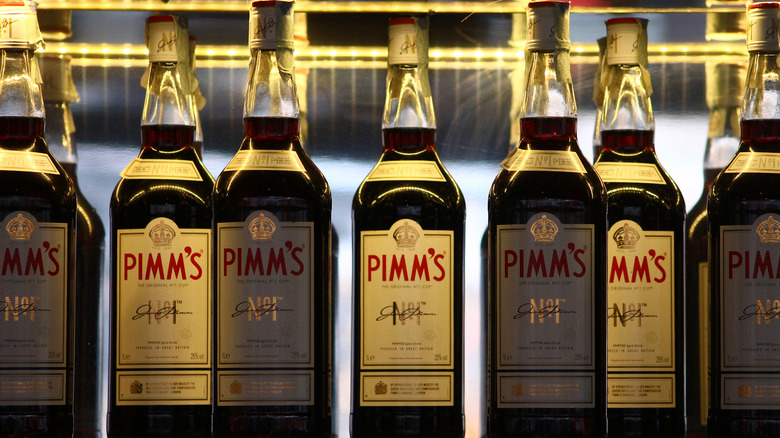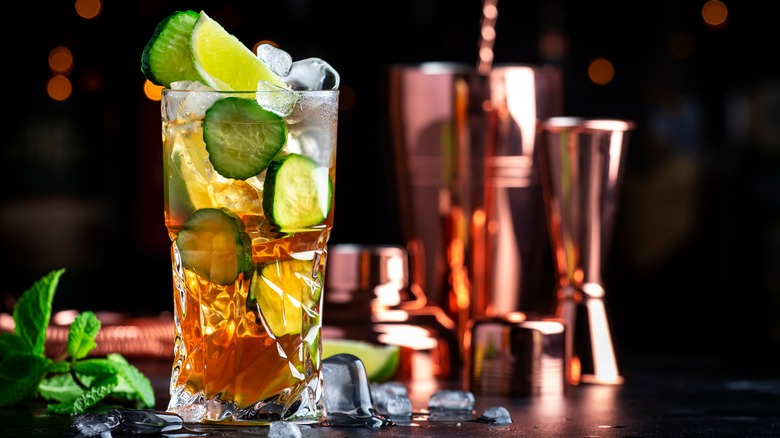What Is A Pimm's Cup And Why Did It Begin As A Health Drink?
Any student of food history can tell you: Many so-called health tonics of yesteryear are considered borderline toxic today. One 1800s elixir, Mariani Wine, promised to cure malaria but was actually just red wine spiked with cocaine. But not all concoctions from the past have gained a sordid reputation. In fact, some, like the popular Pimm's Cup, have gone on to become national treasures. Known as the unofficial drink of Wimbledon, the Pimm's Cup cocktail is a classic drink hailing from the United Kingdom.
Like a cross between a fruit-laden sangria and a gin and ginger ale-spiked Gin Buck cocktail, the Pimm's cup is distinguished by its use of Pimm's No. 1 liqueur, a gin infused with herbs, spices, and fruit extracts. Added to this aromatic base is a blend of lemon juice, ginger ale, and plenty of freshly sliced fruit and mint, making a refreshing and low-alcohol beverage. Though this is a decidedly delicious tipple for hot summer months, how did this drink once qualify as a health tonic? And how did it become the beloved modern cocktail it is today?
Drinking to your health
First, let's take a look at Pimm's medicinal origins. Pimm's liqueur got its name from James Pimm, a London tavern owner who sold oysters and drinks to his English patrons in the early 1800s. At his bar, Pimm served a famed "house cup" that was said to aid in digestion. The ingredients were a mix of gin, quinine, and a blend of herbs and spices. Unlike other health drinks of that age, this elixir does actually have some digestif qualities, as the juniper berries and bitters used to make gin help stimulate stomach acids and enzymes that'll help break down the food in your stomach. In addition to that, quinine, the pivotal ingredient of tonic sodas, was once an accepted treatment for malaria, doubling down on the drink's curative qualities.
The bar's signature health cure eventually lead to the development of Pimm's No. 1 gin liqueur, with No. 2, No. 3, and so on each representing different liquors used with the same herb and spice blend. As it went commercial and worldwide, the drink slowly began to take shape as the fruit-filled cocktail we know today.
The fruity Pimm's Cup cocktail of today
As the liqueur traveled all over the world, many countries began putting their own spins on the original Pimm's Cup, mixing different fruit, sodas, and herbs with the classic liqueur. It found a particularly warm home in the port city of New Orleans, where a version of the Pimm's Cup, made with lemonade and 7UP rather than tonic, is still served to this day. Still, nowhere is the modern Pimm's Cup embraced with as much fanfare as its original home in Great Britain.
Nothing solidified its star status as much as when, in 1971, the Pimm's bar was built in Wimbledon stadium where the drink became the cocktail of choice for tournament watchers. To enjoy the gold standard recipe, mix together lemonade, ginger ale, Pimm's No. 1, fresh fruit, and mint, and serve with plenty of ice. From a health tonic to a refreshing court side cocktail, the Pimm's Cup has aged with plenty of grace and dignity.


